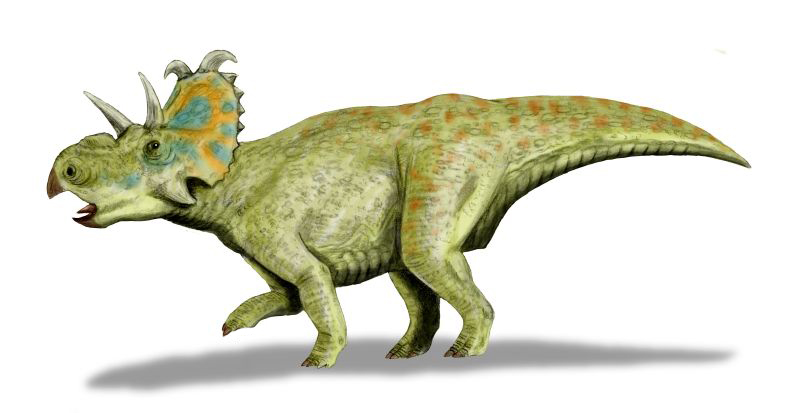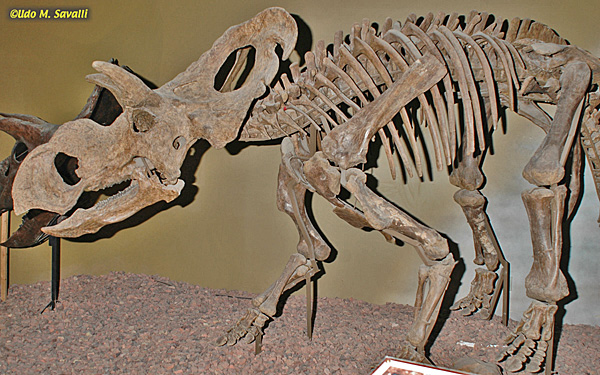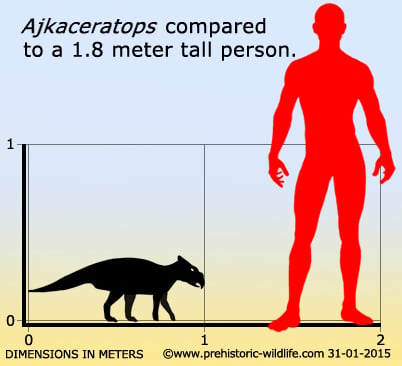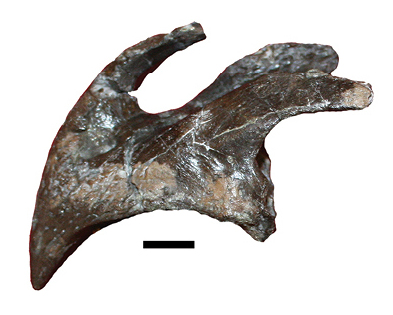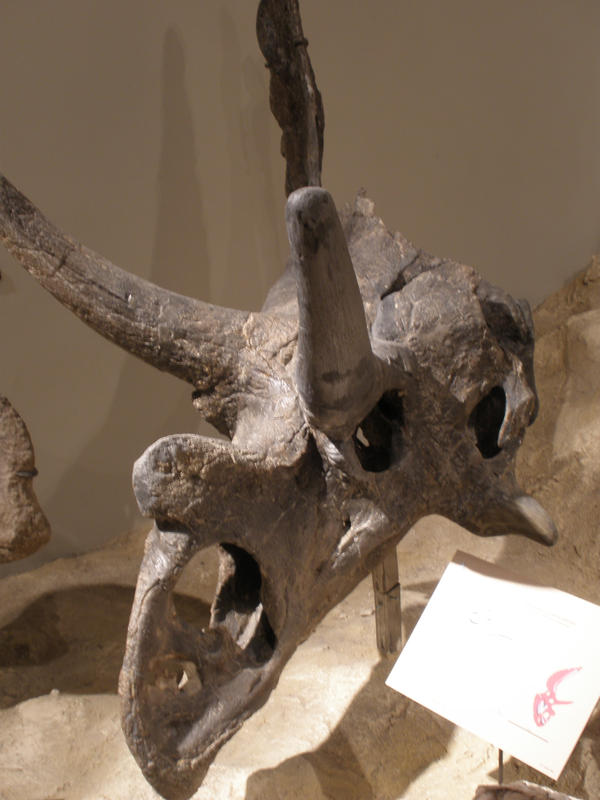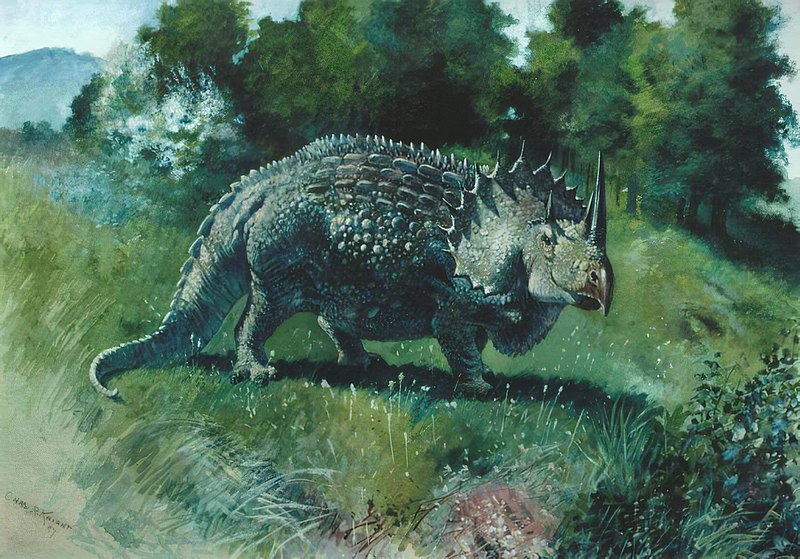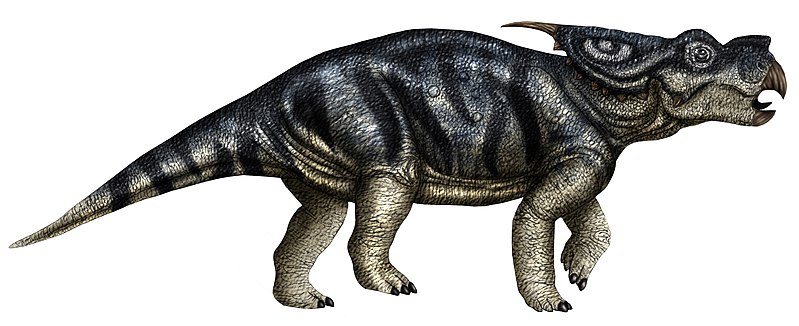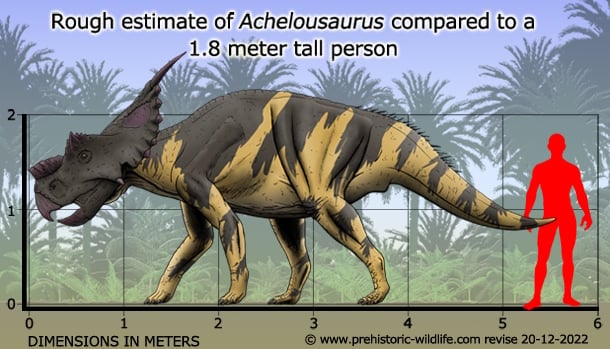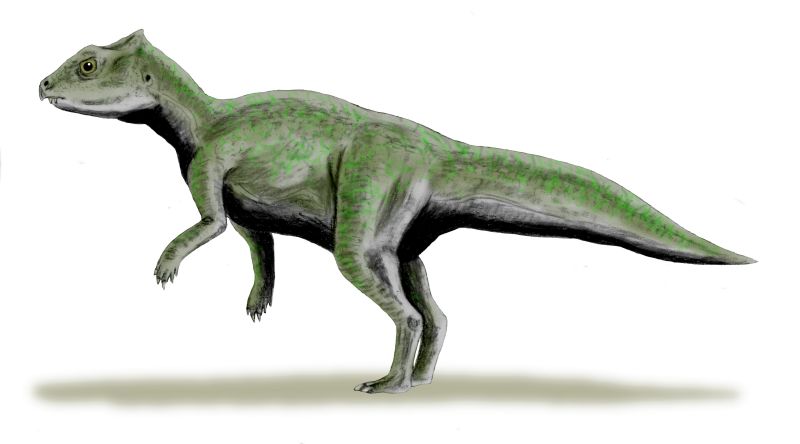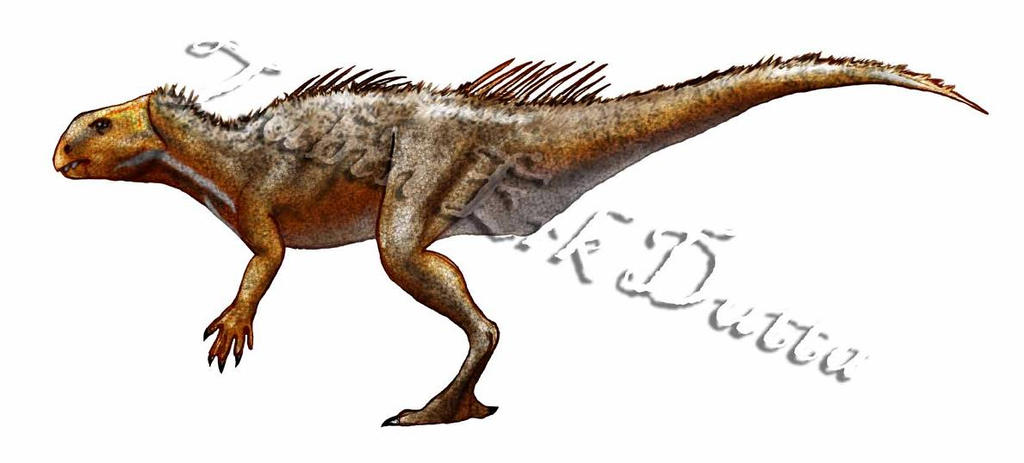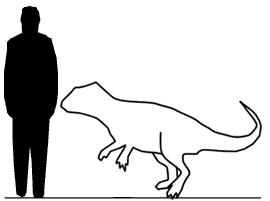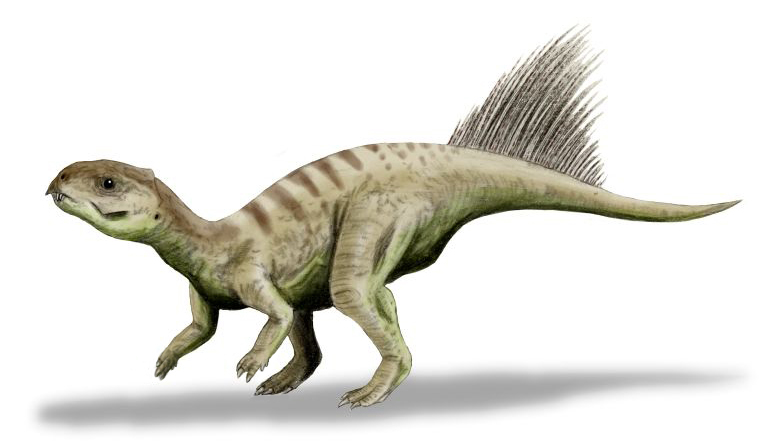[Recent Entries][Archive][Friends][User Info]
Below are the 10 most recent journal entries recorded in the "Сообщество, посвящённое ра" journal:| April 15th, 2015 | |
|---|---|
| 08:56 pm [industrialterro] [Link] |
Albertaceratops Альбертацератопс (Albertaceratops; букв. «рогатая морда из Альберты») — род птицетазовых динозавров из семейства цератопсид, живших в раннем меловом периоде (около 83,5—70,6 миллионов лет назад) на территории нынешней Северной Америки. Окаменелости динозавра были найдены на территории провинции Альберта (Канада) и штата Монтана (США). Впервые описан палеонтологом Ryan в 2007 году. Всего известно два скелета Albertaceratops. Представлен одним видом — Albertaceratops nesmoi. Albertaceratops (meaning "Alberta horned face") was a genus of centrosaurine horned dinosaur from the middle Campanian-age Upper Cretaceous Oldman Formation of Alberta, Canada. Albertaceratops is known from a single complete skull (TMP.2001.26.1) found in August 2001 and skull and postcranial fragments. This genus is unusual in combining long brow horns with an otherwise centrosaurine skull, as centrosaurines normally possess short brow horns. Over its nose was a bony ridge, and on its frill were two large outwardly-projecting hooks. A phylogenetic analysis carried out by its describer, Michael J. Ryan, found it to be the most basal centrosaurine. Additional specimens were reported from a bonebed in the Judith River Formation of Montana, which is equivalent to the Oldman Formation and differentiated only by the United States/Canadian border. However, further study showed these remains to come from a chasmosaurine, Medusaceratops. Both ceratopsids lived during the same time period, about 77.5 million years ago. The specific name, A. nesmoi, is derived from the name of Cecil Nesmo, a rancher living in Manyberries, Alberta, a town of less than 100 people located 71 km south of Medicine Hat. The rancher was thus honored in recognition of his efforts to aid fossil hunters. Репродукции (1, 2, 3, 4, 5, 6): Размеры тела в сравнении с человеком: Tags: Вымершие рептилии, Мел, авеметатарзалии, архозавроморфы, архозавры, диапсиды, динозавроморвф, динозавры, маргиноцефалии, неорнитискии, птицетазовые, центрозаврины, цераподы, цератопсиды, цератопсы |
| 08:13 pm [industrialterro] [Link] |
Albalophosaurus Альбалофозавр (Albalophosaurus) — род птицетазовых динозавров подотряда цераподов, живших в раннем меловом периоде (около 145—140 миллионов лет назад), на территории нынешней Азии. Окаменелости теропода были найдены в геологической формации Kuwajima Formation в Японии. Впервые описан палеонтологами Ohashi и Barrett в 2009 году. Представлен одним видом — A. yamaguchiorum. В результате кладистического анализа было установлено, что Albalophosaurus относится к группе Cerapoda. Другие характеристики, такие как морфология зубов Albalophosaurus предполагают отнесение данного рода к Ornithopoda. Учитывая много недостающей информации исследователи ограничились размещением данного таксона Cerapoda указав его как incertae sedis. Albalophosaurus (meaning 'white crest lizard') is a genus of ceratopsian ornithischian dinosaur. It was described in 2009 from remains found in 1997 by Yoshinori Kobayashi from the Kuwajima Formation of central Japan, outcropping in Hakusan in the Ishikawa Prefecture. The holotype, SBEI 176, consists of cranial bones from an incomplete, disarticulated skull and left lower jaw thought to belong to a single individual. The type species is named A. yamaguchiorum. The generic name is derived from Latin albus, "white", and Greek λόϕος (lophos), "crest", a reference to the snow-covered crest of Mount Hakusan. The specific name honours Ichio Yamaguchi en Mikiko Yamaguchi, who discovered and prepared many fossils from the site. The exact age of the strata from which the remains of Albalophosaurus have been found is not known because of the lack of marine beds containing index fossils, but the Kuwajima Formation is known to have formed during the Early Cretaceous, most likely after the Berriasian and before the Barremian based on the ages of underlying and overlying formations. More recent studies suggest that the age of the Kuwajima Formation is most likely Valanginian—Hauterivian, although the exact age is still uncertain. Although Albalophosaurus was classified as a basal ceratopsian in a phylogenetic analysis conducted along with the description of the genus, only one ambiguous synapomorphy of the clade is present in the holotype, and none of the unambiguous synapomorphies that define Ceratopsia are present. Other characteristics, such as those of the dental morphology of Albalophosaurus, seem to suggest that the genus shares a relation to Ornithopoda. Thus the authors of the original description of the genus refer it to Cerapoda incertae sedis, and do not consider it to be a ceratopsian. Han et al., 2012 found Albalophosaurus to be a ceratopsian more derived than Micropachycephalosaurus, Yinlong, Stenopelix, and Chaoyangosaurus, but basal to a clade composed of Psittacosaurus and more derived ceratopsians. Tags: Вымершие рептилии, Мел, авеметатарзалии, архозавроморфы, архозавры, диапсиды, динозавроморфы, динозавры, маргиноцефалии, неорнитискии, птицетазовые, цераподы, цератопсы |
| April 6th, 2015 | |
| 08:22 pm [industrialterro] [Link] |
Alaskacephale Alaskacephale was a genus of pachycephalosaurid dinosaur that lived in the late Campanian to Maastrichtian stages of the Late Cretaceous (around 80 to 69 million years ago). Alaskacephale was named by Robert Sullivan in 2006. The genus name refers to Alaska, where the fossil was found in the Prince Creek Formation. The species name, gangloffi, honors paleontologist Roland Gangloff. The only known specimen of A. gangloffi is the holotype, a nearly complete left squamosal with a characteristic array of polygonal nodes. The dimensions of this bone suggest that A. gangloffi was about half the size of Pachycephalosaurus wyomingensis or three quarters the size of Prenocephale prenes, and about the same size as Prenocephale edmontonensis and Prenocephale brevis. The specimen was previously described by Gangloff et al. (2005) as an unnamed pachycephalosaurid, possibly a Pachycephalosaurus. Gangloff et al. described the squamosal as having a suture with the quadrate, a feature previously described only in Pachycephalosaurus. Sullivan (2006) opined that this "suture" is instead a breakage point in both Alaskacephale and Pachycephalosaurus, so it could not be used to unite the two taxa. Аляска известна не только суровым климатом и потрясающей природой. Здесь располагается богатая формация Принс-Крик, которая, на радость палеонтологов всего мира, регулярно поставляет новые таксоны динозавров. Рассмотрим первого и пока единственного обнаруженного там пахицефалозавра. Латинское название Alaskacephale происходит от древнегреческого слова "голова" и "Аляска". Существовали аляскацефалы в конце мелового периода, около 72 – 68 миллионов лет назад (ранний маастрихтский ярус). Были распространены на территории Соединённых Штатов Америки, в Аляске. Ныне известен единственный вид – Alaskacephale gangloffi, соответственно являющийся типовым. Единственный обнаруженный экземпляр аляскацефала (соответственно, голотип) получил идентификационный номер UAM AK-493-V-001. Он представляет собой чешуйчатую кость с характерными рядами конусовидных выростов – части обрамления купола. Аналогичное имелось у североамериканского родича – пахицефалозавра (Pachycephalosaurus). Длина тела аляскацефала достигала 2,25 метров. Высота доходила до 0,9 метров, а весил этот ящер около 40 кг. Североамериканская свита Принс-Крик, с лихвой насыщенная водоёмами, в начале маастрихта стала прибежищем многих растительноядных динозавров от мала до велика. По соседству с небольшим аляскацефалом могли проживать даже внушительные эдмонтозавры (Edmontosaurus) и пахиринозавры (Pachyrhinosaurus). Кто же мог представлять для аляскацефала угрозу? Этот ящер наверняка обладал неплохой скоростью передвижения. В этой формации обнаружены троодоны (Troodon), заврорнитолесты (Saurornitholestes) и ещё один неидентифицированный дромеозаврид ("Dromaeosaurus albertensis"). Эти хищники были хорошо вооружены и достаточно быстры для охоты на аляскоцефала, тем более что они могли атаковать добычу группами. Пахицефалоза́вры (Pachycephalosauria) — инфраотряд травоядных динозавров из группы Marginocephalia. Название впервые было использовано Марианской и Осмольской в 1974 году, но до сих пор точного таксономического определения данной группе не дано. В 1998 году Пол Серено предложил следующее определение: все виды, которые менее тесно связаны с трицератопсом, чем с Pachycephalosaurus. Вагнер в 2004 году в своём обзоре The Dinosauria дал другое определение: все виды, связанные ближе с Pachycephalosaurus wyomingensis чем с Triceratops horridus. В 2005 году Серено дал более сложное определение: все виды, более тесно связанные с Pachycephalosaurus wyomingensis, чем с Heterodontosaurus foxii, Ankylosaurus magniventris, Stegosaurus armatus, Iguanodon bernissartensis и Ceratops montanus. Выделение данной группы осложняется из-за многих неопределённостей внутренних взаимоотношений видов в отряде птицетазовых динозавров. Представители группы обитали с берриасского по маастрихтский века (146 до 65 млн. лет назад) на территории Азии и Северной Америки. Другие известные виды — Stygimoloch и Dracorex, которые иногда рассматриваются в качестве синонима рода Pachycephalosaurus. ( Read More ) Tags: Вымершие рептилии, Мел, авеметатарзалии, архозавроморфы, архозавры, диапсиды, динозавроморфы, динозавры, маргиноцефалии, неорнитискии, пахицефалозавры, птицетазовые, цераподы |
| March 1st, 2015 | |
| 07:52 pm [industrialterro] [Link] |
Ajkaceratops Айкацератопс (Ajkaceratops; от венгер. «Ajka» Айка — город в Венгрии и «ceratops» — рогатая морда) — род травоядных динозавров инфраотряда цератопсов, обитавший в меловом периоде (около 85 млн лет назад) на территории нынешней Европы. Типовой вид — Ajkaceratops kozmai. В длину взрослый Ajkaceratops достигал 1 метра. Окаменелые останки были найдены в 2009 году группой палеонтологов под руководством Аттилы Оси (Atilla Ösi) из Венгерской Академии Наук (Hungarian Academy of Sciences) на территории современной Венгрии в бокситовых рудниках Ихаркут близ города Айка и описаны в 2010 году. Описан по верхним и нижним частям клюва. Ученые предполагают, что A. kozmai начал своё путешествие из Азии и, двигаясь от острова к острову, постепенно уходил всё дальше на запад (в современную Европу). Ajkaceratops схож по строению с азиатскими видами цератопсов Bagaceratops и Magnirostris, что дает возможность предположительно отнести его к семейству протоцератопсидов, однако точную принадлежность установить трудно из-за недостаточного количества костей. Сравнение окаменелостей путем кладистического анализа говорит о том, что Ajkaceratops является цератопсидом, близким к Bagaceratops, но более примитивным, чем Zuniceratops и Ceratopsidae. На основе исследования окаменелостей Ajkaceratops Оси (2010) определил данного динозавра как базальный род клады Coronosauria. The holotype, cataloged as MTM V2009.192.1, consists only of a few skull fragments, including rostral bones, fused premaxillae, and maxillae fragments (the beak and jaw fragments). These fossils are kept in the Hungarian Natural History Museum, in Budapest. Although the fossils are fragmentary, the paper describing Ajkaceratops estimated a body length of 1 m (3.3 ft). Other material includes four predentary bones, cataloged as MTM V2009.193.1, V2009.194.1, V2009.195.1, and V2009.196.1; these are also believed to have belonged to Ajkaceratops, although they are proportionately smaller, and probably came from other individuals of the genus. The fossils of Ajkaceratops were discovered in the Csehbánya Formation, which is interpreted as "a floodplain and channel deposit formed by variegated clay, silt with interbedded grey and brown sand, and sandstone beds". This strata dates to the Santonian stage, around 86 to 84 mya (million years ago). Ajkaceratops shared its environment with other dinosaurs such as Rhabdodon, nodosaurid ankylosaurs, and theropods, as well as non-dinosaurian eusuchian crocodiles, azhdarchid pterosaurs, bothremydid turtles, teiid lizards, and enantiornithine birds. Bagaceratopidae is a family of neoceratopsian dinosaurs. It was named by Alifanov in 2003 but no definition has been proposed. Because of lacking of the definition, Bagaceratopidae was considered inactive by Paul Sereno in 2005. Alifanov in 2003 classified to this family four genera: Bagaceratops, Breviceratops, Lamaceratops and Platyceratops and in a publication from 2008 he included in Bagaceratopidae also Magnirostris and newly described genus Gobiceratops. Alifanov suggested also that Bagaceratopidae, unlike other neoceratopsian families, is of Paleoasiatic origin. Bagaceratopids existed during the late Cretaceous period, between about 85.8 and 70.6 million years ago. Фрагменты черепа небольшого динозавра, относившегося к инфраотряду цератопсов (Ceratopsia), были найдены в Венгрии. Три фрагмента палеонтологи под руководством Аттилы Оси (Attila Osi) из Венгерской академии наук (Hungarian Academy of Sciences in Budapest) нашли в бокситовом карьере возле города Айка (Ajka). Палеонтологи назвали нового динозавра в честь этого города - Ajkaceratops kozmai. Статья, посвященная открытию этого динозавра, опубликована в журнале Nature. О том, что цератопсы обитали в Европе, палеонтологи догадывались уже давно. Ведь первые представители этой группы возникли в Азии, а своего расцвета цератопсы достигли в Азии и Северной Америке. Попасть в Америку минуя Европу в конце юрского и в меловом периоде было практически невозможно. Поэтому, логично было предположить, что они расселялись как раз через Европу, переплывая с острова на остров или мигрируя в те эпохи, когда море отступало и острова сливались между собой. Но костей в Европе ранее не находили, поэтому вопрос оставался открытым до обнаружения айкацератопса. Размеры тела в сравнении с человеком: Tags: Вымершие рептилии, Мел, авеметатарзалии, архозавроморфы, архозавры, багацератопсиды, диапсиды, динозавроморфы, динозавры, маргиноцефалии, неорнитискии, птицетазовые, цераподы, цератопсиды, цератопсы |
| February 22nd, 2015 | |
| 07:13 pm [industrialterro] [Link] |
Agujaceratops Агухацератопс (Agujaceratops) — род птицетазовых динозавров из семейства цератопсидов, группы маргиноцефалов, живших в позднем меловом периоде (около 83—70 миллионов лет назад), на территории нынешней Северной Америки. Окаменелости были найдены в округе Брюстер (Brewster) штата Техас, формации Агуха (Aguja Formation). Впервые описан палеонтологами Лукасом (Lucas), Салливаном (Sullivan) и Хантом (Hunt) в 2006 году. Представлен одним видом — A. mariscalensis. Известен только один скелет. Первоначально Леманом (Lehman) в 1989 году был назван Chasmosaurus mariscalensis. Экземпляр был пронумерован P.37.3.086 UTEP. Однако позже, в 2006 году, был рекомбинирован в A. mariscalensis Лукасом и его коллегами. In 1938, three dinosaur bone beds were excavated, and ceratopsian material was collected from Big Bend National Park (Texas) by William Strain. This material was studied by Lehman in 1989 and named Chasmosaurus mariscalensis. It is known only from the holotype UTEP P.37.7.086 a partial adult skull which includes a braincase, left supraorbital horncore, left maxilla and a right dentary. Additional material was associated with the holotype, but not considered to be part of it. All specimens of Agujaceratops were collected from the lower part of the Upper Shale member of the Aguja Formation, dating to about 77 million years ago, in the Big Bend National Park, Brewster County. Subsequent analysis resulted in the taxon being put in its own genus. Agujaceratops was named by Spencer G. Lucas, Robert M. Sullivan and Adrian Hunt in 2006, and the type species is Agujaceratops mariscalensis. Agujaceratops is similar to both Pentaceratops and Chasmosaurus. Its short frill suggests it probably was not an ancestor of Pentaceratops. Агухацератопс был типичным представителем семейства цератопсид, жившим примерно 83-70 миллионов лет назад (кампанский ярус), на территории Северной Америки (США). Агухацератопс был длинной примерно в восемь метров, высотой почти до трех метров и как предполагают ученые весил около двух тонн. Динозавр имел черепной воротник схожий с воротником пентацератопса (родственного ему вида), который был более вертикально расположен и в длину немного короче. На тыльной стороне ободка воротника наблюдается достаточно глубокая вырезка. Череп массивный и тяжелый, в длину составлял примерно от метра до метра шестидесяти сантиметров. Над глазами находились два рога среднего размера, практически одинаковые и еще один небольшой рог располагался на носу. Рога были прямые, чуть загнутые кверху. Скорее всего, агухацератопс использовал свои внушительные рога для защиты при нападении хищников или при решении спорных вопросов во внутрисемейных конфликтах. По предположениям ученых-палеонтологов по морфологическим особенностям рогов и окраске данные динозавры могли определить возраст родственной особи, ее положение и авторитет в стаде. ( Read More )
Размеры тела в сравнении с человеком: Tags: Вымершие рептилии, Мел, авеметатарзалии, архозавроморфы, архозавры, диапсиды, динозавроморфы, динозавры, маргиноцефалии, неорнитискии, птицетазовые, хасмозаврины, цераподы, цератопсиды, цератопсы |
| February 18th, 2015 | |
| 06:23 pm [industrialterro] [Link] |
Agathaumas Агатаум (от Agataumas — «огромное изумление») — сомнительный род динозавров семейства Цератопсиды, живших 70—65 млн лет назад (середина кампанского — конец маастрихского яруса позднего мелового периода) на территории нынешней Северной Америки. Достигал в длину 9 метров, высоты 3 метра и веса 5 тонн. Окаменелости агатаума были найдены в округе Суитуотер (Sweetwater County) штата Вайоминг. Впервые описан палеонтологом Коупом в 1874 году. Представлен одним видом — Agathaumas sylvestris. Останки агатаума обнаружил американский учёный Ф. Меек в 1873 году при раскопках в штате Вайоминг (США). Он сообщил об этом известному палеонтологу Эдварду Коупу, который немедленно прибыл на место и занялся изучением находки. Название своё — «огромное изумление» — агатаум получил потому, что учёные были сильно потрясены размерами животного. В 1897 году художник Чарльз Найт по заказу Э. Коупа сделал ряд рисунков ящера, которые в 1925 году послужили Уиллису О’Брайну основой для создания образа агатаума в фильме «Затерянный мир». Agathaumas (/æɡəˈθɔːməs/; "great wonder") is a dubious genus of a large ceratopsid dinosaur that lived in Wyoming during the Late Cretaceous (late Maastrichtian stage, 66 million years ago). The name comes from Greek, αγαν - 'much' and θαυμα - 'wonder'. It is estimated to have been 9 metres (30 ft) long and weighed 6 tonnes (5.9 long tons; 6.6 short tons), and was the largest land animal known at the time of its discovery. It was the first ceratopsian known to science, though relatively little is known about it. The original specimen consisted only of the animal's hip bones, hip vertebrae and ribs, and because these bones vary little between ceratopsid species, it is usually considered a nomen dubium. It is provisionally considered a synonym of Triceratops, but is difficult to compare to that genus because it is only known from post-cranial remains. The fossil remains of Agathaumas were first found in 1872 in southwestern Wyoming. They were discovered by Fielding Bradford Meek and H.M. Bannister while they were looking for fossil shells in the Lance Formation (then Laramie Formation) near the Black Butte and Bitter Creek. Meek and Bannister were employed by Ferdinand Hayden's Geological Survey of the Territories, and notified paleontologist Edward Drinker Cope of the find. Cope himself searched the ridge near Black Butte and re-discovered Meek's site, finding huge bones protruding from the rocks near a coal vein. The bones were preserved in sand and clay sediments, packed with fossil sticks and leaves, indicating a heavily forested habitat. Cope later (in 1873) described the skeleton as "the wreck of one of the princes among giants." Later in 1872, Cope published a description and name for the animal, Agathaumas sylvestris, or "marvelous forest-dweller," in reference to its great size and the environment revealed in the same rocks as its bones. The name Agathaumas has been cited as an example of Cope's excitement with this discovery, which was, at the time, the largest known land animal that had ever lived (until several years later, with the discovery of the giant sauropod dinosaurs of the Morrison Formation. Cope and his team eventually recovered complete hip bones, sacral vertebrae, and several ribs from the animal. Since these were the first ceratopsian remains found, Cope was uncertain as to precisely what sort of dinosaur Agathaumas was (and for a time considered it a hadrosaur) until O. C. Marsh described Triceratops in 1889. In an 1889 paper, Cope suggested that Marsh's Ceratopsidae be renamed Agathaumidae, because of the paucity of Ceratops remains. Unfortunately, the bones of the rear half of the animal found are not particularly diagnostic in ceratopsians and Agathaumas remains a nomen dubium. No other remains have been found in the area, but based on its size and age of the rocks, it probably was a Triceratops. Хасмозаврины или цератопсины (Chasmosaurinae или Ceratopsinae) — подсемейство птицетазовых динозавров, обитавших в позднем меловом периоде (около 77—65 миллионов лет назад). Все известные виды были четвероногими и обитали в основном в Северной Америке хотя один вид, Тураноцератопс, известен из отложений Азии. Большинство представителей этого подсемейства обладают лишь шишковатыми «зачаточными» рожками, расположенными над глазницами, в отличие от своих ранних предков), тогда как трицератопс наоборот имеет крупные костяные наросты. Самым ранним из всех известных рогатых динозавров в Северной Америке является зуницератопс (Zuniceratops), живший 90 млн лет назад.
Tags: Вымершие рептилии, Мел, авеметатарзалии, архозавроморфы, архозавры, диапсиды, динозавроморфы, динозавры, маргиноцефалии, неорнитискии, птицетазовые, хасмозаврины, цераподы, цератопсиды, цератопсы |
| December 28th, 2014 | |
| 09:24 pm [industrialterro] [Link] |
Achelousaurus Ахелоузавр (Achelousaurus — «ящер Ахелоя») — род динозавров из группы цератопсов, живших в позднем меловом периоде 75—70 млн лет назад (с кампанского по маастрихский ярусы позднего мела), на территории нынешней Монтаны (США). Представлял собой четвероногого травоядного динозавра с попугаеобразным клювом, небольшими костными шишками на морде и двумя над глазницами, а также двумя рогами на вершине костистого нароста на шее. По мере роста животного костный нарост на носу увеличивался и становился направленным вперёд, а наросты над глазами становились бугристыми. Ахелоузавр достигал длины 6 метров, высоты 3,5 метра и веса в 2,5 тонны. Череп ахелоузавра достигал 1,6 метра в длину. В 1995 году палеонтолог Скотт Сэмпсон описал единственный вид этого рода — A. horneri. Видовой эпитет дан в честь Джека Хорнера, американского палеонтолога, известного своими открытиями динозавров в штате Монтана. Родовое название Achelousaurus дано в честь персонажа греческой мифологии Ахелоя — божества, в борьбе с Гераклом потерявшего один из рогов. На данный момент найдено всего три скелета ахелоузавров. The genus and the one named species (A. horneri) were both named by paleontologist Scott Sampson in 1995. The specific name honors Jack Horner, an influential American paleontologist famous for his Montana dinosaur discoveries, who in 1987 headed the team that excavated the holotype skull of Achelousaurus, MOR 485. The generic name Achelousaurus is a complex reference to Greek mythology. Achelous, an important Greek river deity, had one of his horns torn off by Hercules, in a mythological fight with the legendary hero. All three known skulls of Achelousaurus have rough bosses in the same places where other ceratopsians have horns, giving them the appearance of having had the horns ripped off. Achelous was also celebrated for his shapeshifting ability, just as Achelousaurus appear to combine features of other ceratopsian dinosaurs. Achelousaurus horneri are known from the U.S. state of Montana, in the Two Medicine Formation, which preserves sediments dated from the Campanian stage of the Late Cretaceous Period, between 83 and 74 million years ago. Achelousaurus specimens are found in the highest levels of the formation, probably closer to the end of that timeframe, 74 mya. Contemporary dinosaur species included Prosaurolophus blackfeetensis, Scolosaurus cutleri, Hypacrosaurus stebingeri, Einiosaurus procurvicornis, and tyrannosaurids of uncertain classification. Scientists have so far recovered three skulls and some postcranial material from the Two Medicine, all housed at the Museum of the Rockies in Bozeman, Montana. The skull of a full-grown Achelousaurus (including the frill horns) is over 5 feet (1.6 meters) long. Early reports suggested that Achelousaurus represented a transitional form, "Type C", between ceratopsians with modified horns like Einiosaurus, "Type B" (with which A. horneri shares two horns on the end of the frill), and the derived, hornless Pachyrhinosaurus (Horner et al., 1992). While they may or may not form a direct line of descent, all three of these genera are at least closely related, and are often united in the tribe Pachyrhinosaurini, inside the subfamily Centrosaurinae and the family Ceratopsidae (Sampson, 1995; Dodson et al., 2004). ( Read More ) Размеры тела в сравнении с человеком:
Tags: Вымершие рептилии, Мел, авеметатарзалии, архозавроморфы, архозавры, диапсиды, динозавроморфы, динозавры, маргиноцефалии, неорнитискии, птицетазовые, центрозаврины, цераподы, цератопсиды, цератопсы |
| January 25th, 2013 | |
| 01:50 pm [industrialterro] [Link] |
Yinlong Yinlong (meaning "hidden dragon") is a genus of basal ceratopsian dinosaur from the Late Jurassic Period of central Asia. It was a small, primarily bipedal herbivore, approximately 3 meters (9.8 ft) long. Yinlong is the oldest and most primitive ceratopsian known to science. A coalition of American and Chinese paleontologists, including Xu Xing, Catherine Forster, Jim Clark, and Mo Jinyou, described and named Yinlong in 2006. The generic name is derived from the Mandarin Chinese words 隱 (yǐn: "hidden") and 龍 (lóng: "dragon"), a reference to the movie Crouching Tiger, Hidden Dragon, large portions of which were filmed in the western Chinese province of Xinjiang, near the locality where this animal's fossil remains were discovered. Long is the word most often used in the Chinese media when referring to dinosaurs. The species was named after the late Will Downs, a frequent participant in paleontological expeditions to China, who died the year before Yinlong was discovered. The known fossil material of Yinlong consists of many skeletons and skulls. The first specimen discovered was a single exceptionally well-preserved skeleton, complete with skull, of a nearly adult animal, found in 2004 in the Middle-Late Jurassic strata of the Shishugou Formation located in Xinjiang Province, China. Yinlong was discovered in an upper section of this formation which dates to the Oxfordian stage of the Late Jurassic, or 161.2 to 155.7 million years ago. All other described ceratopsians are known from the later Cretaceous Period. A small rostral bone on the end of the upper jaw clearly identifies Yinlong as a ceratopsian, although the skull displays several features, especially the ornamentation of the squamosal bone of the skull roof, which were previously thought to be unique to pachycephalosaurians. The presence of these features in Yinlong indicates these as actual synapomorphies (unique features) of the larger group Marginocephalia, which contains both the pachycephalosaurs and the ceratopsians, although these features have been lost in all known ceratopsians more derived than Yinlong. The addition of these characters further strengthens the support for Marginocephalia. Yinlong also preserves skull features reminiscent of the family Heterodontosauridae, providing support for the hypothesis that heterodontosaurids are closely related to marginocephalians (Cooper, 1985; Zhao et al., 1999; You et al., 2003). The group containing Marginocephalia and Heterodontosauridae has been named Heterodontosauriformes (Xu et al., 2006). Yinlong was discovered with seven gastroliths preserved in the abdominal cavity. Gastroliths, stones stored in the digestive tract and used to grind plant material, are also found in other ceratopsians such as Psittacosaurus, and are also widely distributed in most other dinosaur groups, as well as in many types of birds.
Размеры тела в сравнении с человеком:
Ископаемые останки (1, 2, 3, 4):
Tags: Вымершие рептилии, Юра, авеметатарзалии, архозавроморфы, архозавры, диапсиды, динозавроморфы, динозавры, маргиноцефалии, неорнитискии, птицетазовые, цераподы, цератопсы |
| 11:55 am [industrialterro] [Link] |
Xuanhuaceratops Xuanhuaceratops is a genus of dinosaur from the Late Jurassic Period (dated to 148 million years ago). A member of the family Chaoyangsauridae, it was one of the earliest ceratopsians (Weishampel et al. 2004; Xu et al. 2006; Zhao et al. 2006). The fossils were found in Hebei Province, northeastern China. This dinosaur was described in a report in the journal Acta Geologica Sinica by Chinese paleontologist Zhao Xijin and colleagues. Xuanhuaceratops had previously been mentioned in press as "Xuanhuasaurus", a nomen nudum.
Tags: Вымершие рептилии, Юра, авеметатарзалии, архозавроморфы, архозавры, диапсиды, динозавроморфы, динозавры, маргиноцефалии, неорнитискии, птицетазовые, цераподы, цератопсы, чаоянгзавриды |
| August 6th, 2012 | |
| 11:42 am [industrialterro] [Link] |
Chaoyangsaurus Chaoyangsaurus ("Chaoyang lizard") was a marginocephalian dinosaur from the Late Jurassic of China (dated to between 150.8 and 145.5 million years ago). Chaoyangsaurus belonged to the Ceratopsia (Greek for "horned faces"), a group of primarily herbivorous dinosaurs with parrot-like beaks which thrived in North America and Asia during the Cretaceous Period (which ended roughly 65 million years ago). Chaoyangsaurus, like all ceratopsians, was primarily a herbivore. Chaoyangsaurus was found in the Chaoyang area of Liaoning Province in northeastern China. The specific name honours the Chinese paleontologist C. C. Young. Unlike many other dinosaurs, Chaoyangsaurus had been discussed in a number of sources before its official publication. As a result of this, several different spellings of its name have come and gone as nomina nuda ("naked names", names with no formal description behind them). The first name to see print was Chaoyoungosaurus, which appeared in the guidebook to a Japanese museum exhibit, and was the result of an incorrect transliteration. Zhao (1983) also used this spelling when he first discussed the species, so it is technically a nomen nudum. Two years later, Zhao again used this early spelling when he assigned a type specimen and species name, Chaoyoungosaurus liaosiensis (Zhao, 1985). According to Dong (1992), the name Chaoyoungosaurus had been officially described in a paper by Zhao and Cheng in 1983, but no cite for this supposed paper exists, and it is likely it was not properly published. Dong, in his 1992 paper on the subject, also emended the name to the "correct" spelling of Chaoyangosaurus (note the extra letter "o"). However, since this renaming was not accompanied by a formal description of the dinosaur, Chaoyangosaurus must also be considered a nomen nudum. It was not until 1999 that the dinosaur finally received an official name. Sereno (1999) used the name Chaoyangsaurus in an overview of ceratopsian taxonomy. Once again, that name was a nomen nudum. However, in December of that year, Cheng, Zhao, and Xu published an official description using the name Chaoyangsaurus youngi, and as the first name for this genus that is not a nomen nudum, it has official priority over all other spellings that have been used. Chaoyangsauridae is a family of dinosaurs. They were the first marginocephalian dinosaurs to appear on the planet, about 148 million years ago, in the Late Jurassic period. Members of this group had sharp beaks for snipping off leaves to eat, and a very small frill. There are disagreements that the chaoyangsaurids were part of the pachycephalosaurian group, ceratopsian group, or a different ancestral group. Two dinosaur genera, Chaoyangsaurus and Xuanhuaceratops, are included in Chaoyangsauridae. Both animals are more primitive (or basal) than Psittacosaurus, an early ceratopsian. Цера́топсы, рогатые динозавры (Ceratopsia, от греч. κέρας — «рог», ωψ — «лицо») — группа (инфраотряд) травоядных птицетазовых динозавров позднего юрского и мелового периодов, обладавших характерным крючковатым клювом. Окаменелые останки обнаружены в Северной Америке, Азии и Европе. Из наиболее известных представителей — цератопс и трицератопс. Происхождение и эволюция цератопсов окончательно не ясны. Самым ранним цератопсом считается открытый в Китае в 2005 году динозавр Иньлун (Yinlong), чьи останки датируются поздним юрским периодом (161—156 млн лет назад), в результате чего предполагается их азиатское происхождение в юрском периоде. Также остается открытым вопрос и о появлении крупных рогатых динозавров в позднем меле на территории Северной Америки. Находки палеонтологов в 2010 году на территории Венгрии дали доказательство тому, что в среднем меловом периоде цератопсы (Ajkaceratops) обитали на территории современной Европы, которая в те времена представляла собой разрозненные острова. Учёные предполагают, что данная разновидность мигрировала из Азии, двигаясь от острова к острову. Marginocephalia ("fringed heads") is a clade of ornithischian dinosaurs that includes the thick-skulled pachycephalosaurids, and horned ceratopsians. They were all herbivores, walking on two or four legs, and are characterized by a bony ridge or frill at the back of the skull. The clade evolved in the Jurassic period, and became common in the Upper Cretaceous.
Размеры тела в сравнении с человеком:
Tags: Вымершие рептилии, Юра, авеметатарзалии, архозавроморфы, архозавры, диапсиды, динозавроморфы, динозавры, маргиноцефалии, неорнитискии, птицетазовые, цераподы, цератопсы, чаоянгзавриды |

